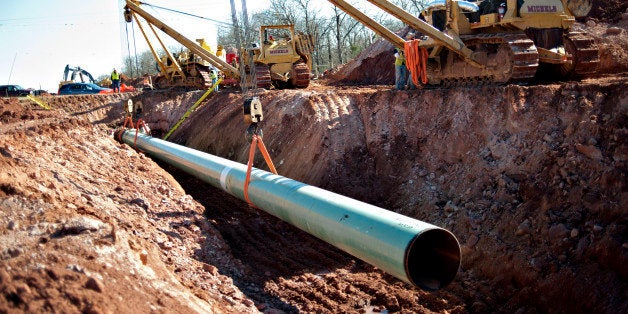
The International Energy Agency (IEA) joined Wall Street in affirming the strong connection between proposed tar sands pipelines like Keystone XL and expanded tar sands production. IEA's conclusion undercuts industry's claims that the massive tar sands pipeline will have no material impact on its expansion plans. In its World Energy Outlook (WEO), the IEA forecast that tar sands production would double to reach 4.3 million bpd by 2035 if large pipeline projects through the United State and British Columbia were approved. Moreover, the IEA went on to note that if proposed pipelines were approved more rapidly than it expected, tar sands production could easily expand one million bpd above their forecast. IEA’s analysis joins mounting evidence that the Keystone XL tar sands pipeline is a linchpin for expanded tar sands production and the significant carbon emissions associated with it. The State Department’s flawed draft environmental review of the project has been rebutted by Wall Street analysis, the tar sands industry in its communications with the Canadian government, the rail industry, and the sources it relied on it back its flawed conclusions. The proposed Keystone XL tar sands pipeline clearly fails the climate test the President set as a threshold for the project’s approval and should be rejected.
The IEA’s forecast of tar sands expansion assumes the approval of large, controversial tar sands pipelines. As Elana Schor of E&E News reported:
Although rail ‘has increased dramatically,’ IEA wrote, pushing oil sands production to 4.3 million barrels per day (bpd) by 2035 ‘is contingent on’ large pipelines that would increase exports to the United States and Asia.
Moreover, the IEA noted that if the controversy surrounding these tar sands pipelines is resolved and they are rapidly permitted, tar sands expansion will occur at a significantly accelerated pace. According to the IEA:
In Canada, if the controversies over the Keystone XL pipeline and the pipelines from Alberta to the British Columbia coast were to be resolved quickly, oil sands production could easily grow 1 Mbd (million barrels per day) higher than we project.
IEA’s assessment demonstrates how vulnerable the tar sands industry’s expansion plans are. In fact, as the following figure demonstrates, all of the major pipeline expansions currently proposed do not provide sufficient pipeline capacity to enable industry’s plans to triple tar sands production by 2030.
Without the approval of major tar sands pipelines like Keystone XL, industry will be forced to rethink over 6 million bpd in proposed tar sands expansion projects. Many of these projects are already economically marginal according to the Canadian Association of Petroleum Producers – so marginal, in fact, that regulations increasing costs by less than a dollar are likely to reduce production and investment levels. Significantly greater costs and logistical challenges associated with transportation alternatives such as rail are likely to constrain expansion significantly further than Alberta’s proposed oil and gas regulations.
The argument that the proposed Keystone XL tar sands pipeline will have no significant impact on production and associated carbon emissions was always deeply flawed. Now it is becoming indefensible.